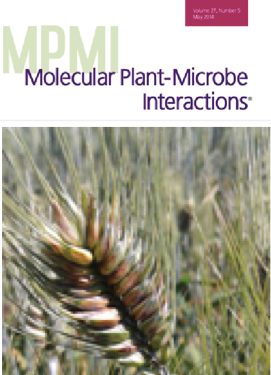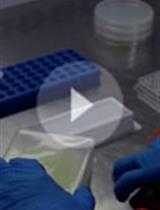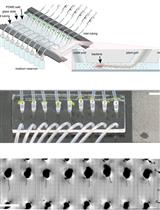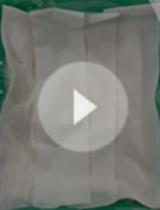- EN - English
- CN - 中文
Quantification of Ralstonia solanacearum Colonization of Potato Germplasm Using Luminescence
发光法定量测定马铃薯种质中青枯菌的定植
发布: 2015年05月05日第5卷第9期 DOI: 10.21769/BioProtoc.1461 浏览次数: 11107
评审: Arsalan DaudiAnonymous reviewer(s)
Abstract
We have developed an unsophisticated, non-disruptive and accurate method for evaluation of pathogen colonization in planta. In this protocol we use a Ralstonia solanacearum (R. solanacearum) UY031 strain genetically modified to constitutively generate light from a synthetic luxCDABE operon stably inserted in its chromosome. This system allows bacterial quantification in a high-throughput manner, avoiding time-consuming and tedious bacterial dilution plating and colony counting. In addition, this system could be especially useful in plant breeding programs to detect bacterial latent growth in symptomless parental lines before their inclusion in long-term disease resistance breeding programs.
Materials and Reagents
- Ralstonia solanacearum UY031 strain transformed with the reporter plasmid pRCG-Ppslux, which bears the chloroplast promoter PpsbA and the entire LuxCDABE operon (Figures 1 and 2)
Note: Plasmid and strain available under material transfer agreement (MTA) from Marc Valls’ laboratory. - Four-week-old Solanum tuberosum (S. tuberosum) and Solanum commersonii (S. commersonii) plants
Note: They were grown in a TREF universal potting soil mix, in a greenhouse, with 12 h light and temperatures maintained between 22 to 25 °C (50 to 60% relative humidity -RH) for three weeks and then transferred for an additional week into a growth chamber at 27 °C and 65% RH with a photoperiod of 12 h of light. - Gentamicin (75 µg/ml in solid and 5 µg/ml in liquid cultures) (Sigma-Aldrich, catalog number: G1264 )
- Bacto-peptone (BactoTM, catalog number: 211677 )
- Yeast extract (BactoTM, catalog number: 210929 )
- Tryptone (BactoTM, catalog number: 211699 )
- Casamino acids (BactoTM, catalog number: 223050 )
- Dextrose Glucose (DifcoTM, catalog number: 215510 )
- Bacto-agar (BactoTM, catalog number: 214030 )
- Triphenyltetrazolium chloride (TTC) (DifcoTM, catalog number: 231121 )
- Sodium phosphate dibasic heptahydrated (Na2HPO4.7H2O) (Sigma-Aldrich, catalog number: S9390 )
- Potassium phosphate (KH2PO4) (Sigma-Aldrich, catalog number: P5655 )
- Sodium chloride (NaCl) (VWR International, catalog number: 443824T )
- Ammonium chloride (NH4Cl) (VWR International, catalog number: 0621 )
- Magnesium sulfate (MgSO4) (VWR International, catalog number: 0338 )
- Calcium chloride (CaCl2) (VWR International, catalog number: 1.02391.1000 )
- L-glutamate (Sigma-Aldrich, catalog number: G1626-100G )
- Rich B medium (see Recipes)
- Boucher’s minimal medium (MM) (see Recipes)
- Luria and Bertani broth (LB) (see Recipes)
- 1 M magnesium sulfate (MgSO4) (see Recipes)
- 20% glucose (see Recipes)
- 1 M calcium chloride (see Recipes)
- 20 mM L-glutamate (see Recipes)
- To prepare 1 L of 1x MM (see Recipes)
Equipment
- LAS4000 Chemiluminescence and Fluorescence Imaging System (Fujifilm Life Science)
- Luminometer Berthold FB 12 (Titertek-Berthold, catalog number: 11010102 )
- Spectrophotometer (Shimadzu Kyoto, model: UV-1603 visible spectrophotometer)
- Incubator that can be set at 30 °C containing shaker for Erlenmeyer and tubes
- Tabletop centrifuge (Eppendorf, model: 5418R )
- Culture tubes (overflow volume 22 ml) (VWR International, catalog number: 47729-580 )
- Sterile 150 ml flasks
- 2 ml Eppendorf tubes
- Razor blade
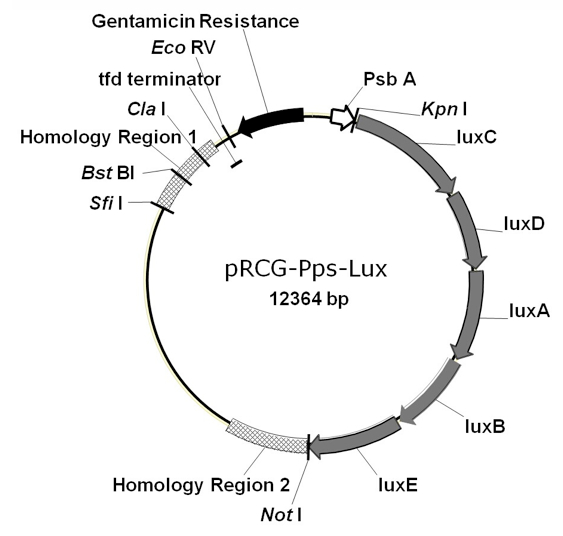
Figure 1. Vector map of pRCG-Pps-lux, designed to generate the luminescent strain for detection of bacterial colonization and growth in planta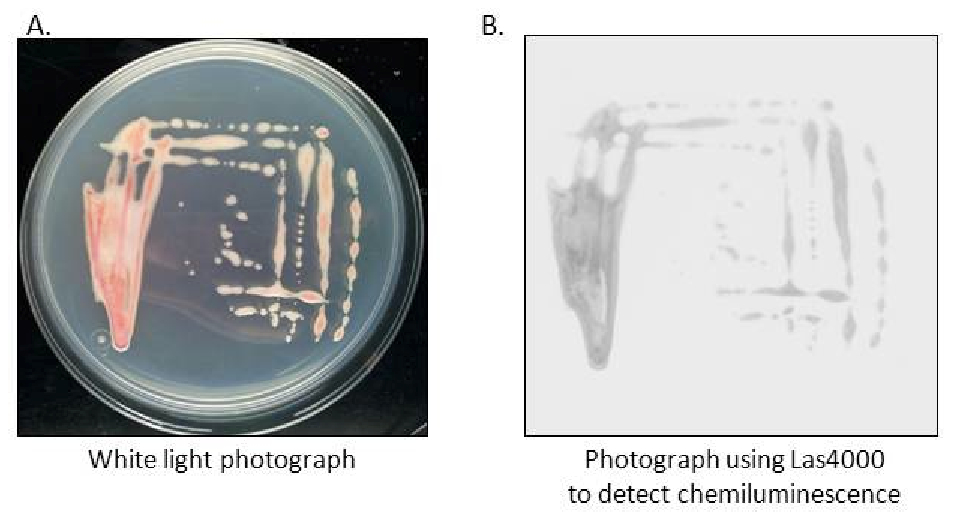
Figure 2. Visualization of Ralstonia solanacearum transformed with the pRCG-Pps-lux plasmid under white light A or chemiluminiscence B using the LAS4000 light imager
Procedure
文章信息
版权信息
© 2015 The Authors; exclusive licensee Bio-protocol LLC.
如何引用
Zuluaga, A. P., Coll, N. S. and Valls, M. (2015). Quantification of Ralstonia solanacearum Colonization of Potato Germplasm Using Luminescence . Bio-protocol 5(9): e1461. DOI: 10.21769/BioProtoc.1461.
分类
植物科学 > 植物免疫 > 病害生物测定
微生物学 > 微生物-宿主相互作用 > 体内实验模型 > 植物
微生物学 > 微生物-宿主相互作用 > 细菌
您对这篇实验方法有问题吗?
在此处发布您的问题,我们将邀请本文作者来回答。同时,我们会将您的问题发布到Bio-protocol Exchange,以便寻求社区成员的帮助。
Share
Bluesky
X
Copy link


